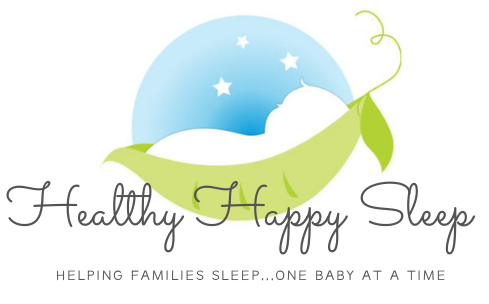Wake Windows by Age: From Newborns to Toddlers

Babies don't come with instructions, but knowing how long they should be awake in between sleep periods is valuable insight every parent needs to know. If you get the wake windows right, your baby will:
- Fall asleep faster
- Not get overtired
- Sleep longer
- Get on a healthy schedule sooner
Understanding wake windows, and knowing how to implement them, takes practice and time. I'm here to help you learn why they're important, and how to make them a part of your baby's routine. Let's go!
What Are Wake Windows?
Wake windows are the gaps of time in between your baby or toddler's sleep periods. Each window begins when the child wakes, and ends when they should be falling asleep. These gaps of time increase with age as the baby's circadian rhythms mature, and as daytime naps begin to lengthen out.
When babies are very young, they get overstimulated quickly, they have poor self regulation skills (i.e calming themselves down when crying), and their naps are naturally short (30-45 minutes). The longer we keep them awake, the more difficult it gets to soothe them, and they have a hard time transitioning from wakefulness into sleep. As they mature, their ability to stay awake lengthens as well as their nap length.
The magic happens when we are able to put them down at the very end of the wake window so that falling asleep is a smooth and peaceful process. If we hit it just right, the baby's body will accept the sleep it's offered and we'll totally dodge the overtired bullet altogether!
But how can you tell when the window is about to close? It's actually not as difficult as it seems! Wake windows correlate with your child's age, and that's a solid place to start. I'll lay out the windows according to your child's age first, and then I'll explain how to figure it out for yourself if you feel your baby or toddler doesn't fit the mold.
Age-by-Age Wake Windows
Most will fall into these natural age brackets, but all babies hit developmental milestones at their own unique rate. It's best to lean more on the conservative side and try the younger bracket recommendation first if you're unsure where to start. Remember: It's always better to put a baby down too early than too late!
Important: When working with wake times, pick your window and then stay consistent for at least 3 days before decreasing/increasing it. Even if your baby isn't responding how you'd like, it usually takes a few days for them to adjust to a new routine before we know whether or not it's helping them!
- Newborn to 12 weeks: 45 - 90 minutes
- 3 months: 90 minutes
- 4 to 5 months: 90 minutes - 3 hours ("by-the-clock" schedule begins to take shape)
- 6 to 12 months: 2 -4 hours (2,3,4 hrs of wake-time between naps is consistent now)
- 13 to 15 months: 2-5 hours
- 16 months to 3 years: 4.5-6 hours
- 3-5 years: 5-6 hours (with a nap) 12 hours (when they stop napping)
How do I follow the windows?
You're probably wondering why there's such a broad range for most of the age brackets. The only ones that are clear-cut are between 3-5 months! Don't get intimidated, there's a reason for the variances - let me explain.
When babies are brand new, they need lots of daytime sleep with shorter wake windows, (i.e. 45-90 minutes, and then 2 hours solid), before hitting the overtired zone. In these early weeks we watch closely for sleep cues (see below) to let us know how soon they need to be put down.
But as they mature, their rhythms begin to follow a "by the clock" routine, which means they fall asleep at predictable times, require less overall daytime sleep, and the naps consolidate - all of these factors bring about longer wake periods.
For instance, by the time babies are 6 months of age, their wake windows become very predictable throughout the day. In the chart, they range from 2-4 hours: this is because as the day progresses, they can handle increasingly longer wake times.
Example for 6-month-old wake windows (2-4 hrs):
- Between the morning wake-up and the morning nap start they need a 2 hour wake window.
- Between the morning nap wake-up and the afternoon nap start they need a 3 hour wake window.
- Between the afternoon nap wake-up and bedtime they need a 4 hour wake window.
This same pattern continues into the older brackets, but the time between the afternoon nap wake-up and bedtime increases and the morning wake-time grows longer when the 1st nap drops. By 4 years of age, a child can handle 5-6 hours of wake-time in the first part of the day and 5 hours after the nap. This is quite a stark contrast to what wake periods look like during the first year.

Newborn to 4 months: How to Interpret Baby’s Sleep Cues
Sleep cues are your baby's way of telling you she's had enough. What most parents don't realize, is that by the time a baby is showing signs of being tired, it's too late, and she's already approached the overtired zone.
This is why, for babies under 4 months of age, I recommend keeping a 3-day sleep log detailing every wake time along with the times you notice the first sleep cue. After doing this, your data will reveal a clear pattern of how long your baby's wake window truly is. Look at the amount of time that lapses between waking and the sleep cue, then subtract 10 minutes: this is how long your baby should be awake before starting her next nap.
Some common sleep cues for infants include:
- yawning
- rubbing their ears or eyes
- moving their head from side to side
- uncharacteristic fussiness/crying
- suddenly having a glazed-over/dazed look
- blank staring
- droopy eyes
- arching their back and refusing to eat
What is a mom to do if she has a stealthily sleepy baby who doesn't show any sleep cues at all? If this is you, don't worry. Just look at the wake window chart and shoot for the earlier end of your child's bracket. It might take some experimentation, but in time you'll figure out exactly what your baby needs.
When there is a lot of out of control crying at naptime or bedtime, the odds are you're pushing her too long between sleep periods. If she's content, but it's taking her longer than 20 minutes to fall asleep, you can try stretching her a little longer next time.
Follow your baby's lead and try not to get too wrapped up in the "shoulds and shouldn'ts". Before you know it, she'll be ready for those predictable, long naps and more defined wake windows.
When to Adjust Your Baby's Wake Time
Regardless of how easily your baby falls into a routine, there will be days when things are a bit off kilter. If your baby takes a short nap, is awake through the night or starts the day unreasonably early, you'll have to be flexible with how long you keep her up. When this happens, simply look at the wake window chart and plan to put your baby back to sleep when the window opens.
For example, if your baby is 4 months old, you'll keep her up for 90 minutes. If your baby is 13 months, you'll put her down after 2-3 hours of wake time if you know her sleep tank (link this to sleep tank article) is empty. Trust yourself and watch your baby! If your instincts tell you she's sleepy, honor that. No blog post or website can override the fact that you know what's best for your child.
I wish I could say that wake windows are magical and will fix every baby's sleep issues. Depending on what age your child is and how deeply rooted her sleep associations are, it's possible that there are more pieces to the puzzle than changing her wake period lengths. Book a free call here to understand if this can help you and your child.
Meet Laura!
Laura is a specialized pediatric sleep consultant, founder of Healthy Happy Sleep, LLC, and mom of 7 (plus 2 bonus sons!). She has been working with families all over the world for well over 10 years, helping them implement practical tips and approaches with their children to help them get better sleep. Healthy Happy Sleep offers custom sleep plans, one-on-one sessions, and child sleep certification classes. Book a free call with Laura to find out how she can help bring healthy sleep to you and your child.

Wake Windows: FAQ
Wake windows are the gaps of time in between your baby or toddler's sleep periods. Each window begins when the child wakes, and ends when they should be falling asleep. These gaps of time range from 45 minutes to 6 hours depending on the age of the child.
Are you ready
to get the SLEEP you deserve?
